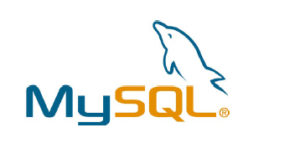- (5.0 Star)
MySQL
Certification Training
We provide Online Instructor And Classroom Instructor led Live virtual classroom by certified trainers/ industry professionals
- Get Up to 35% discount
About Course
MySQL is an open source relational database management system (RDBMS) based on Structured Query Language (SQL). MySQL runs on virtually all platforms, including Linux, UNIX, and Windows. Although it can be used in a wide range of applications, MySQL is most often associated with web-based applications and online publishing and is an important component of an open source enterprise stack called LAMP. LAMP is a Web development platform that uses Linux as the operating system, Apache as the Web server, MySQL as the relational database management system and PHP as the object-oriented scripting language. (Sometimes Perl or Python is used instead of PHP.)
Key Features
You will get 100% job Assurance and life time e-placement support
classed taken by globally certified trainers
You will get 3 year Dedicated placement support
Courses are globally recognized & accredited

Course Type:
Certification Training
Live virtual classroom:
6,399/-
7,999/-
Regular classroom:
6,399/-
7,999/-
- Duration:
20 Hrs
- Enrolled:
65 Learners
- Eligibility:
Fresher 10th/10+2/Graduate with HTML/CSS Skill
- 5 Star:
15 Reviews
MySQL Course Curriculum
DATABASE
- Connecting to and disconnecting from the Server
- How to creating and delete a database?
- How can we choose and change database?
DATA TYPE, OPERATORS AND TABLE CREATION
- Data type
- MySQL Operators
- Creating table
MANIPULATING TABLE
- How to insert data?
How to delete data? - How to delete a table?
- How to rename a table?
- How add or delete or modify column in a table?
RETRIEVING & RESTRICTING DATA
- How can we fetch data from table?
- Operators
- Functions
- How can we impose condition when we are fetching data?
MYSQL FUNCTIONS
- Single row function
- Multiple row function
GROUPING
- How to use group by clause and why?
- How can we restrict data when we are using group by clause?
- Joining
- What is joining?
- What are the various types of joining? With some example.
SUBQUERY
- What is subquery?
- Why should we use subquery?
- How to use subquery?
CONSTRAINTS
- What is constraints and when we can apply constraints on table?
- What is NULL?
- What is primary key?
- What is unique key?
- What foreign key?
- How can we use these constraints?
INDEXING & ENGINE
- What is index?
- Merits and demerits of indexing on a table?
- How to create an index?
- What is engine?
- How can we change a table engine?
- Few points to, that may help us to choose the right type of engine for a table.
STORED PROCEDURE, TRIGGER AND PREPARED STATEMENT
- What prepared statement and how to use prepared statement?
- What stored procedure and how to use stored procedure?
- What trigger and how to use trigger?
QUERY OPTIMIZATION
- Why we need to optimize our query?
- How can we optimize our query?
- How can we optimize our database structure?

Sent Us a Message



